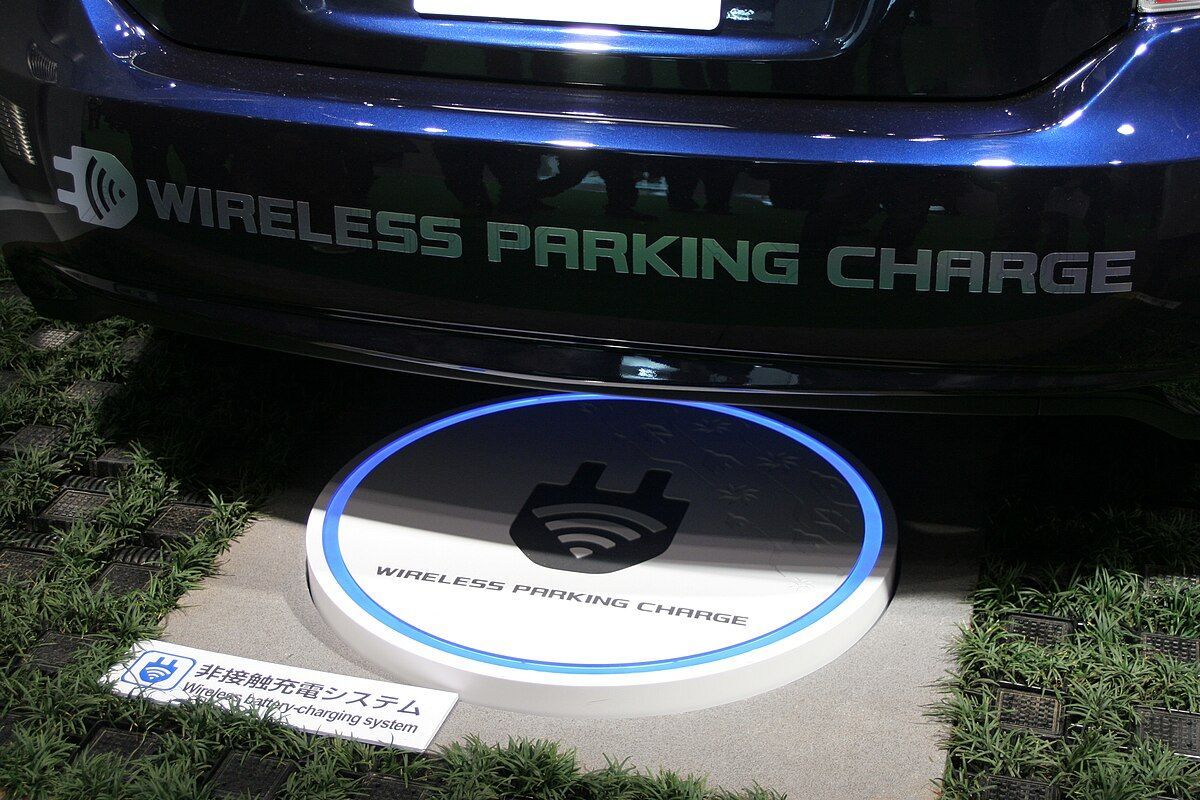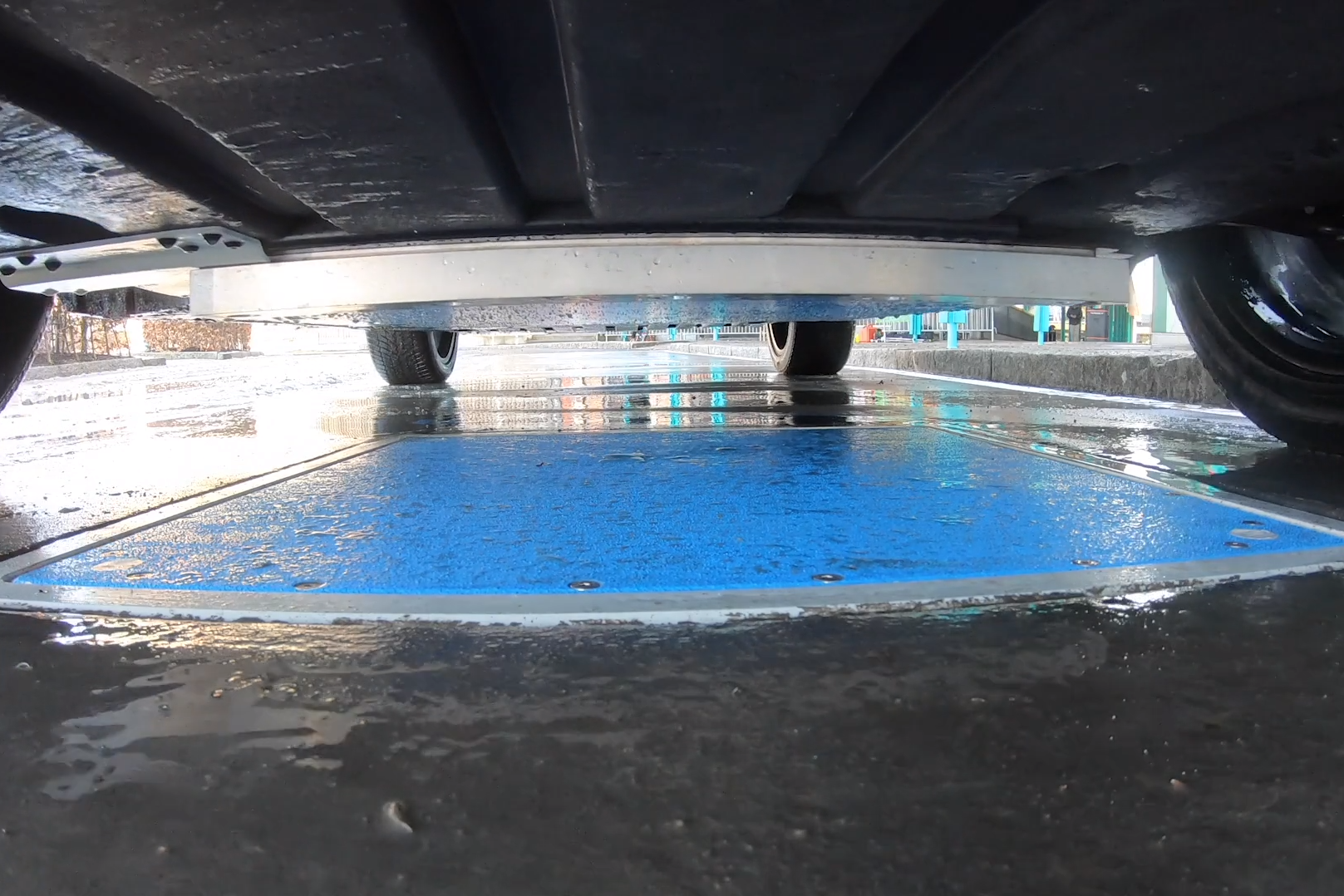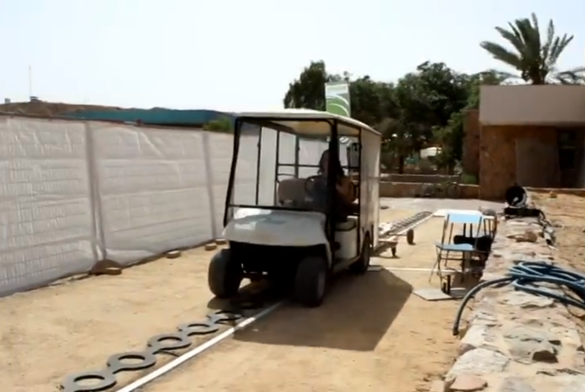Charging 101
𐓏 Charging 101 𐓏
The development and future of EV wireless charging
With the global commitment to net-zero emissions in 2050, various countries are continuously committed to the development of renewable energy. Take Sweden as an example. It has made a "zero fossil fuel plan" and plans to complete the goal by 2030. Among them, the popularization of EVs and the development of charging facility technology are key points.
If the charging facilities were more convenient to operate, and there was no need to insert a gun, just park the car and start charging. Does it sound as simple as the wireless charging of a mobile phone? This sounds quite attractive, right? Therefore, in addition to physical charging piles, the development of EV wireless charging is also worthy of attention.
2.1 Wireless Power Transfer (WPT)
2.1.1 EV stationary state, fixed position charging
By setting up road induction devices on the ground within a certain range, or laying conductor loops under the road surface, and then supplying power from the power grid to the conductor loops, forming an electromagnetic field.
When an EV equipped with a receiver is parked on a specially designed ground, the principle of magnetic induction can be used to transmit energy to the receiving plate of the EV for charging purposes.

Source:Wikimedia Commons (visit the website)

Source:Volvo Car Global Newsroom (visit the website)
At present, the common charging frequency can vary from 30 kHz to 30 MHz. This frequency is much lower than the radio frequency in daily life (700 MHz ~ 3,500 MHz). It will not directly harm the battery cells, nor will it be affected by air, moisture, cement, wood, plastic, and other non-metallic substances. Even if it encounters the human body, it will also pass through directly without causing any damage.
If the visual recognition sensor detects that there is a metal object blocking the electromagnetic field, the sensor will issue a warning and automatically stop the charging process to avoid accidents.
2.1.2 EV driving state charging
What EV owners fear the most is driving until they are almost out of battery and unable to find a charging pile! With the technological development of wireless charging roads, in addition to multiple charging methods, it is even easier to drive with peace of mind.

Source:Electreon Media Kit (visit the website)

Source:Electreon Media Kit (visit the website)
This will be a great boost to the promotion of long-distance electric buses and trucks. Long-distance EVs that originally required large batteries can be equipped with smaller batteries to save costs.
Through wireless charging on the road, the vehicle is being charged while driving, reducing the number of stops for charging, which will help to save time and improve overall economic benefits.
2.2 Application obstacles
2.2.1 Lower energy transfer efficiency, power limitation
It can be observed from mobile phone charging that wired charging is faster than wireless induction charging.
The biggest problem with wireless charging of EVs at present is that the efficiency of wireless charging energy transmission is low, including climate, road conditions, material selection (road surface and induction system), laying area, etc., which will affect the charging efficiency, and there are also differences in charging power.
Due to the limitations, it cannot reach the high-power level of fast charging at this stage.
2.2.2 About cost
Wireless charging equipment is expensive to manufacture and install, which can increase the overall cost of the vehicle and infrastructure. If wireless charging facilities are to be added to existing EVs and parking lots, there will be costs associated with additional modifications.
2.2.3 Standardization
EV wireless charging technology has not yet completed a unified standard, and technologies developed by different manufacturers may have compatibility issues.
2.3 EV driving state charging cases sharing
Road freight accounts for nearly one-fifth of annual global oil consumption. One solution that can potentially achieve the goal of fossil-free transport is electric roads, that charge EVs wirelessly as they drive.
Source:Smart City Sweden (visit the website)
2.3.1 Sweden-The whole road is my charging station!
In 2018, Sweden built the world's first "wireless charging road" on the outskirts of the capital Stockholm. The project is called the Smartroad Gotland (SRG) and finished in September 2023. The Swedish Transport Administration (Trafikverket) commissioned Electreon AB, along with a consortium of partners to deploy the SRG project.
The Electric Road is 1.65 km in length and became the world’s first public wireless inductive Electric Road for heavy-duty vehicles.
In 2022, a wireless charging road test specifically for trucks and buses was launched in the tourist resort - Gotland, and smooth and continuous commercial vehicle operations in June of the same year.
This technology has been rigorously tested in harsh climates for four years (2019-2023). Local passenger shuttles and heavy trucks can be easily charged on the road as long as they are equipped with receivers. Through the plan, the local area significantly reduces the demand for fossil fuels for transportation.
Sources:Smartroad Gotland (visit the website), Electreon (visit the website), Smart City Sweden (visit the website)
2.3.2 Israel - The road that can do wireless charging becomes a reality
In 2017, the startup ElectRoad (headquartered in Caesarea) received consent from the Israeli government to conduct actual wireless charging road tests on the roads of Tel Aviv and plans to install a public bus route, it is about half a mile long and opened in 2018.
The route will hollow out the asphalt on the road and insert charging copper plates, which will be connected to converters on the roadside to provide the power the buses need.

Source:ElectRoad (visit the website)

Source:ElectRoad (visit the website)
It is currently only used on buses because this charging method also requires adding copper plates to the vehicle, but it will be difficult for smaller cars.
Source:Scientific American (visit the website)
2.3.3 United States - The far you drive, the more electricity you get
In 2023, the Michigan Department of Transportation will cooperate with Electreon to launch a charging road in Detroit. EVs can be charged wirelessly regardless of whether they are driving or waiting in a traffic jam.
The Governor of Michigan said that this plan and other infrastructure construction will help Michigan its advantages in automotive technology and industry sustainability. In actual tests in 2023, the results showed that when driving a Ford E-Transit pure electric van on this road, the charging power while traveling can be as high as 16kW!
There are about 60 automotive technology-related companies around the charging road location. It is expected that this highway will become a charging highway test site and also conduct stress testing of charging equipment, so that the development of related technologies can become more mature.
Other similar projects will aid the state in achieving its goal of carbon neutrality by 2050 and having 2 million EVs on the road by 2030.
Indiana will also launch an EV wireless charging pilot project on Highway 52 in April 2024. Purdue University will cooperate with Cummins Inc. to enable wireless charging of vehicles equipped with special receivers at speeds up to 65 miles per hour (approximately 105 kilometers per hour), with construction expected to be completed by the summer of 2025.
Sources:BBC News (visit the website), TITA News (visit the website), Taiwan-U.S. Business Alliance News (visit the website)
Need more help?
Please submit a business support request and our experts will get in touch with you.

Business & Products



Business & Products



Business & Products


